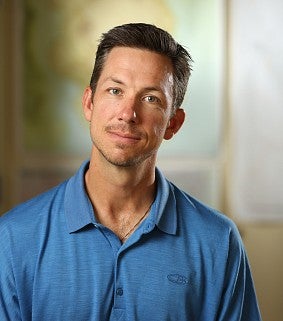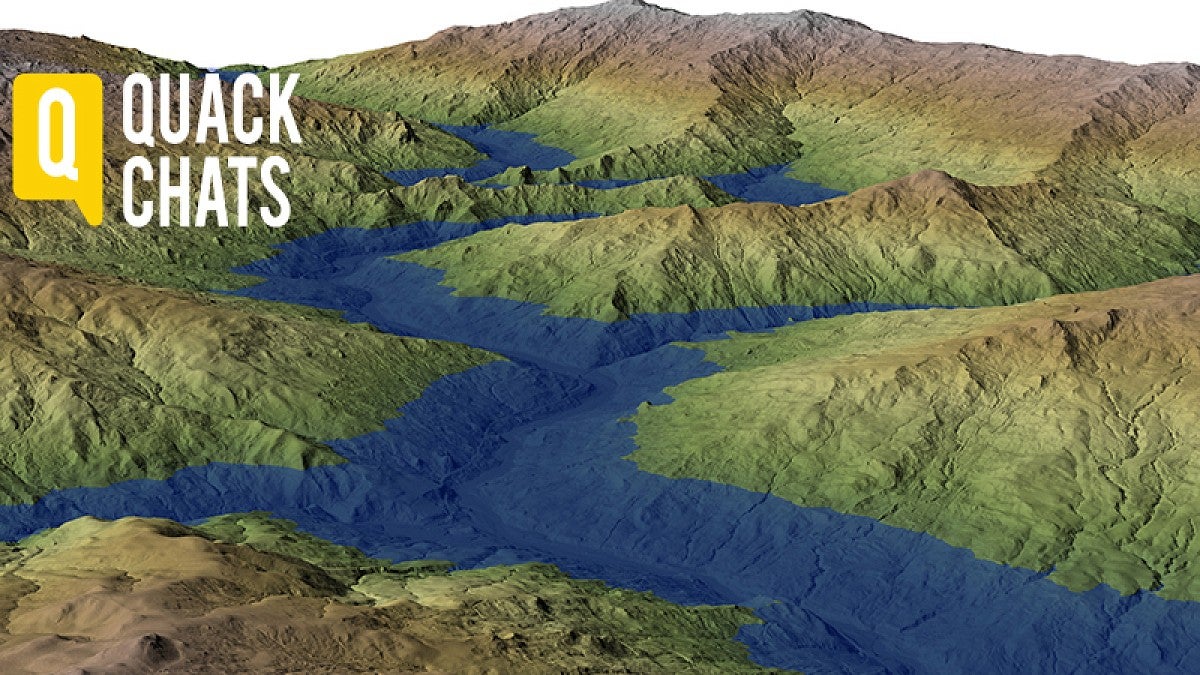In a May 9 Quack Chats pub talk, UO geologist Josh Roering will explain how lasers mounted on aircraft have provided startling details of Oregon’s mountains, earthquakes and landslides.
Often the views reveal evidence for landscapes from the deep past.

Roering’s pub talk will begin at 6 p.m., Wednesday, May 9, at the Ax Billy Grill & Sports Bar, on the third floor of the Downtown Athletic Club, 999 Willamette St. Admission is free. Food and drinks are available for purchase.
“I want to convey the evolution of our ability to visualize and quantify landscapes,” said Roering, who joined the UO’s Department of Earth Sciences in fall 2000. “I have seen a dramatic change just in my lifetime.”
His visual-heavy presentation will include a historic look at observations of Cascadia made by Native Americans and by the first geologists and natural scientists who came into the area. Then he’ll venture into the modern day use of airborne Light Detection and Ranging, or LiDAR, a technology developed in the 1990s and adopted widely by geologists in the last decade.
Also join us for the next Run with a Researcher, 8 a.m., May 12, during Spring Family Weekend
Roering has been on research teams that have discovered ancient lake and river beds, earthquake-induced features and landslides in Oregon, Washington and Northern California using lidar, short for light detection and ranging. He’s used it in studies of termite mounds in South Africa.
“Lidar is the only way to see through the trees,” he said.
Shooting 200,000 packets of laser pulses every second from an airplane, he said, allows scientists to see what they want: the top of the forest canopy, the middle canopy and the ground.
“I want to paint a picture of how our understanding of Cascadia has evolved as a result of using this technology,” Roering said.
To learn more about upcoming Quack Chats, see the Quack Chats section on Around the O. A general description of Quack Chats and a calendar of additional Quack Chats and associated public events also can be found on the UO’s Quack Chats website.


